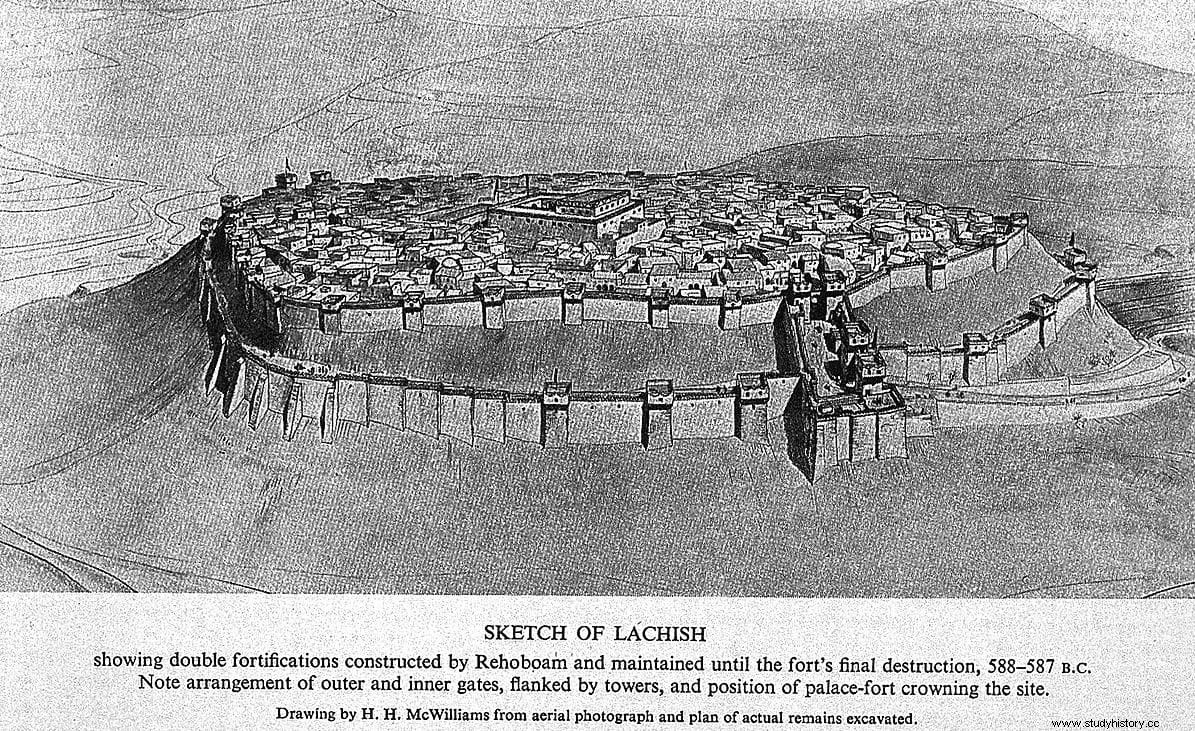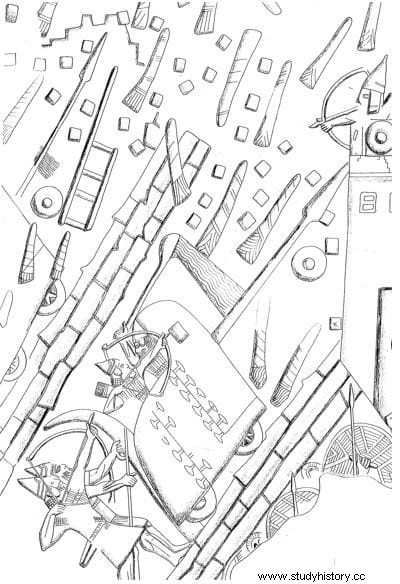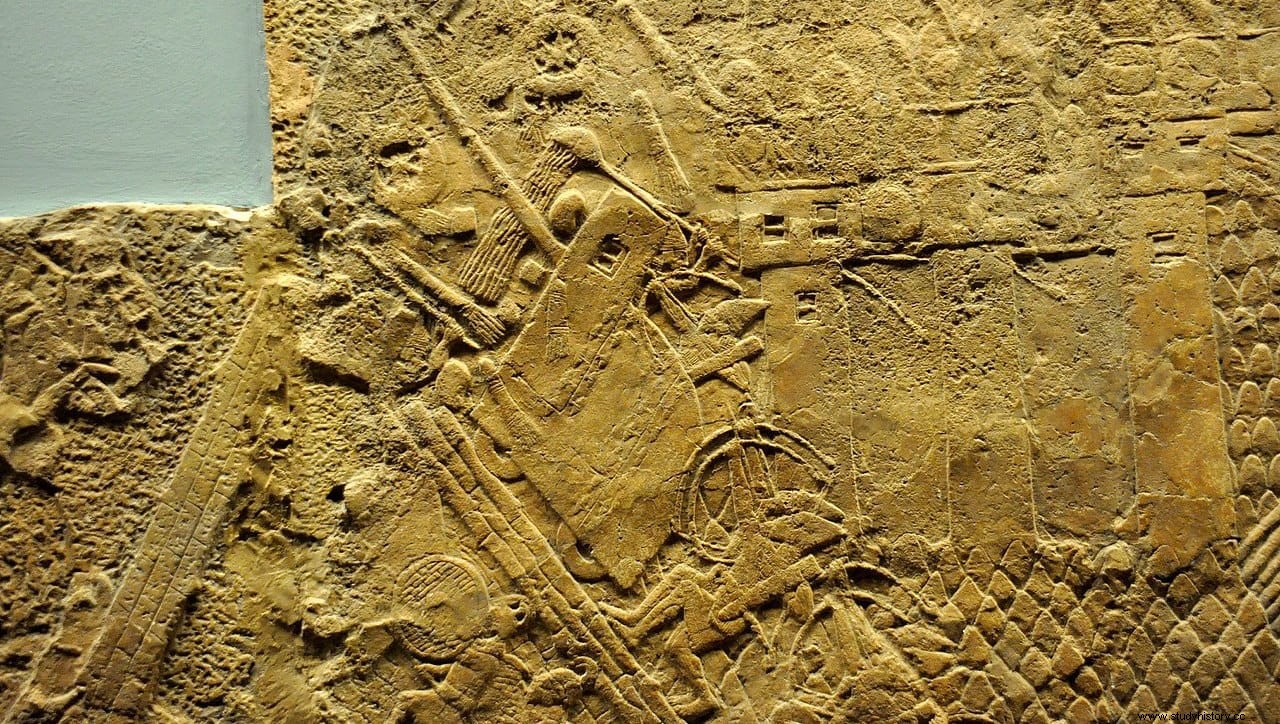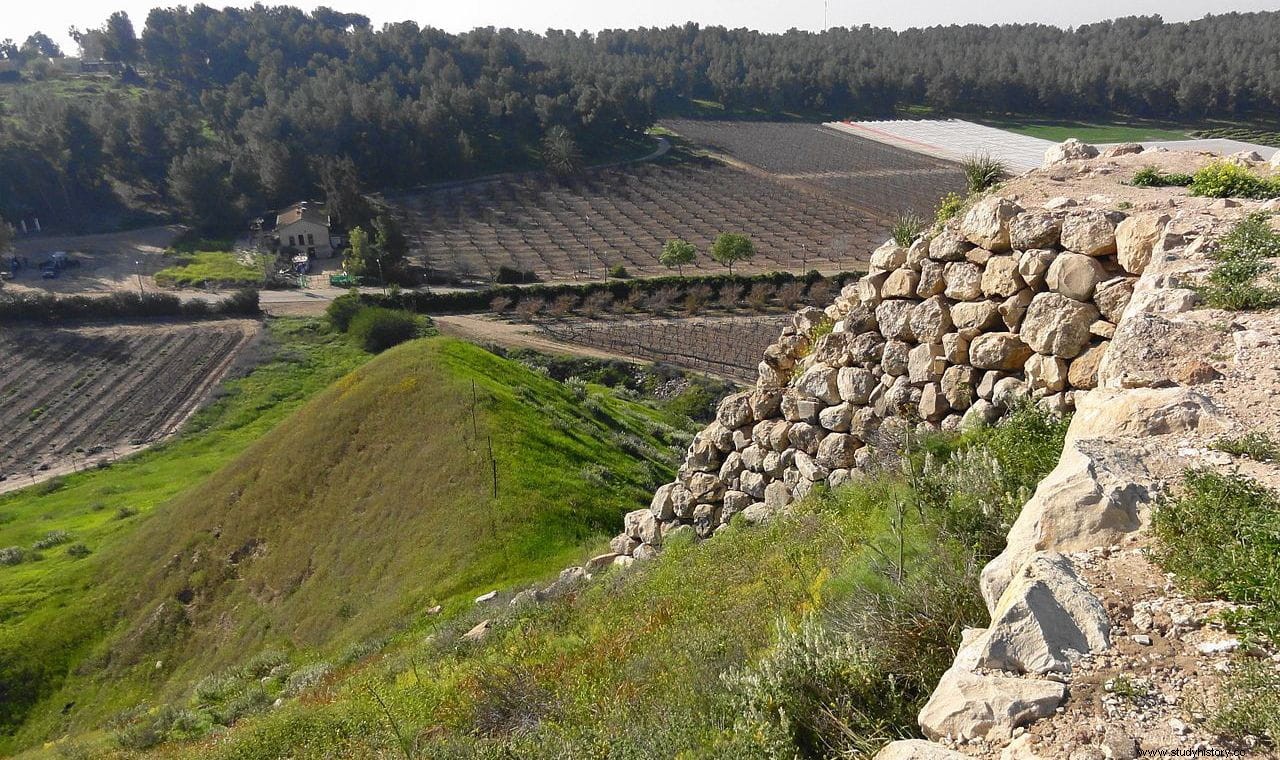In their day, the Assyrians were one of the greatest superpowers in the Middle East, controlling a landmass that stretched from Iran to Egypt. They accomplished this feat with military technologies that helped them win any open-air battle or penetrate any fortified city.
While airpower and bunker hunters help win war today, in the 9th to 7th centuries B.C. everything revolved around the siege ramp, a lofty structure that dragged battering rams up to enemy city walls and allowed Neo-Assyrian soldiers to wreak havoc on their enemies.
The Assyrian siege ramp at Lachish (ancient city in Judah identified with present-day Tell ed-Duweir), some 15 miles east of Hebron, is the only surviving physical example of their military prowess in the entire Near East. Now, for the first time, a team of archaeologists has pieced together how the Assyrian army was able to build the ramp and use it to conquer the city of Lachish.

The team, led by Professor Yosef Garfinkel and Dr. Madeleine Mumcuoglu, from the Institute of Archeology at the Hebrew University of Jerusalem (HU), and Professors Jon W. Carroll and Michael Pytlik, from Oakland University (USA). ), drew on a large number of sources about this historical event to provide this complete picture.
The extraordinary amount of data includes biblical texts (Kings II, 18:9-19:37; Chronicles II, 32; Isaiah 36-37), iconography (stone reliefs depicting Assyrian battle scenes) and Akkadian inscriptions, archaeological excavations and 21st century drone photography. They published their findings in the Oxford Journal of Archaeology.
Lachish was a flourishing Canaanite city in the second millennium BC. and it had been the second most important city in the kingdom of Judah. In 701 BC, Lachish was attacked by the Assyrian army, led by King Sennacherib. Garfinkel's analysis provides a vivid account of the construction of the massive ramp the Assyrians built so they could transport battering rams to the hilltop city of Lachish, breach its walls, and completely overrun the city.
There have been various conflicting opinions on how the formidable task of building the ramp was carried out. However, the rigorous method employed by Garfinkel and his team, which included photogrammetric analysis of aerial photographs and the creation of a detailed digital map of the corresponding landscape, produced a practical model that accounts for all available information on that battle.

The Assyrians had a powerful and well-equipped army that, in the early 8th century BC, quickly put down the growing rebellion in the southern Levant. In 721 BC They conquered the Kingdom of Israel. Twenty years later, the Assyrian army attacked the Kingdom of Judah, laying siege to its most important city, Jerusalem, and launching a direct assault on its second most important city, Lachish. King Sennacherib himself headed to Lachish to oversee its destruction, which began with his army building a ramp to reach the city walls at the top of the hill.
According to Garfinkel, the evidence from the site makes it clear that the ramp was made of small rocks, about 6.5 kilograms each. One of the main problems facing the Assyrian army was the supply of such stones:some three million stones were needed. Where did these stones come from? Collecting natural stones from the fields surrounding the site would be time consuming and would delay the construction of the ramp. A better solution would be to mine the stones as close to the end of the ramp as possible. At Lachish there is indeed an exposed cliff of local bedrock at exactly the point where one would expect it to be , Garfinkel shared.
Research suggests that its construction began about 80 meters from the Lachish city walls, close to where the stones needed for the ramp could be quarried. The stones would have been transported along human chains - passed from man to man by hand. With four human chains working in parallel on the chute, each taking twenty-four-hour shifts, Garfinkel estimated that some 160,000 stones were being moved each day.

Time was the main concern of the Assyrian army. Hundreds of workers worked day and night transporting stones, possibly in two shifts of 12 hours each. Labor was probably supplied by prisoners of war and the forced labor of the local population. The workers were protected by huge shields placed at the north end of the ramp. These shields advanced towards the city a few meters each day , Garfinkel described.
In about 25 days, the ramp, which was shaped like a giant triangular wedge, could have reached the city walls. This model assumes the Assyrians were very efficient, otherwise it would have taken months to complete Garfinkel said. In fact, the prophet Isaiah, who lived at the end of the 8th century B.C. and he was an eyewitness to the events, he mentioned the Assyrian army in some of his prophecies. He refers to the Assyrians as a supernatural and mighty power: None of them tired, none of them stumbling, none of them asleep or drowsy, none of them with their belts undone, none of them with sandal straps broken (Isaiah 5:27).
As the workmen built the final stages of the ramp and approached the walls of Lachish, the inhabitants tried to defend their city by shooting arrows and throwing stones at their enemy. Garfinkel suggests that the workers used huge L-shaped wicker shields, similar to those shown protecting soldiers on Assyrian reliefs.

In the final stage, wooden beams were placed on top of the stones, where the battering rams were placed inside their huge siege engines, weighing up to a ton. The battering ram, a large, heavy wooden beam with a metal spike, slammed back and forth against the walls. Garfinkel suggests that the battering ram was suspended inside the siege engine by metal chains, since the ropes wear out quickly. In fact, an iron chain was found at the top of the ramp at Lachish.
For further confirmation, Garfinkel explains that he is planning excavations at Lachish, at the end of the ramp in the quarry area – this could provide further evidence of Assyrian army activity and how the ramp was built .
